senseamidmadness
Neglected Bike Adopter
As a novice hobby machinist I appreciate this thread.
Follow along with the video below to see how to install our site as a web app on your home screen.
Note: This feature may not be available in some browsers.

Welcome! You are currently logged out of the forum. Some forum content will be hidden from you if you remain logged out. If you want to view all content, please LOG IN!
If you are not an MOA member, why not take the time to join the club, so you can enjoy posting on the forum, the BMW Owners News magazine, and all of the benefits of membership? If you click here, you have the opportunity to take us for a test ride at our expense. Enter the code 'FORUM25' in the activation code box to try the first year of the MOA on us!
I am having a tough time understanding that because the spring in the length of the handle is pre-loaded for a certain torque. Now if I grab it at the handle or 50% of the way from the pivot, I cannot see how that makes a different in that the whole length of the handle is being moved and the spring pre-load does not change as to where I hold it.
I would need a diagram showing how the insides work.
Take a look at the video with the mathematical physics explanation. I needed to follow that math to "get it".
That said, I can't see any reason to choke up on the handle and make the work harder than it needs to be.
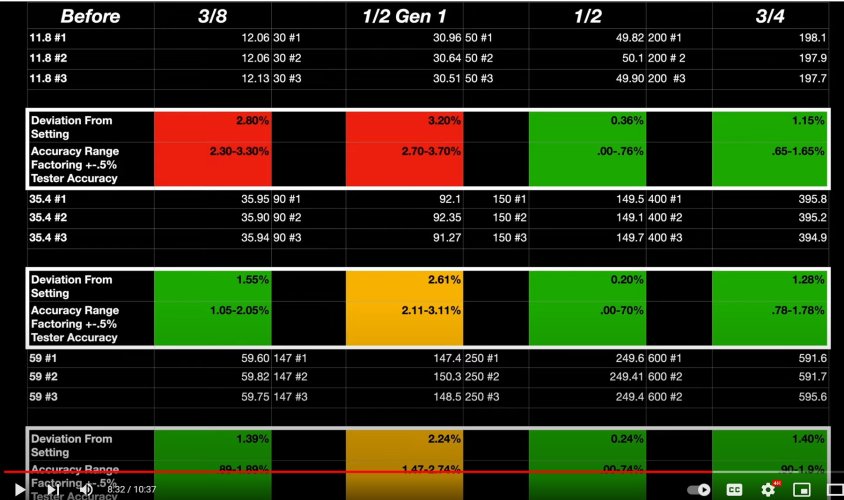
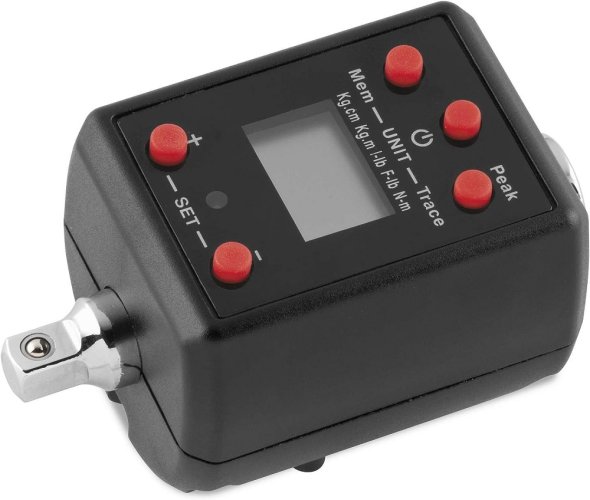
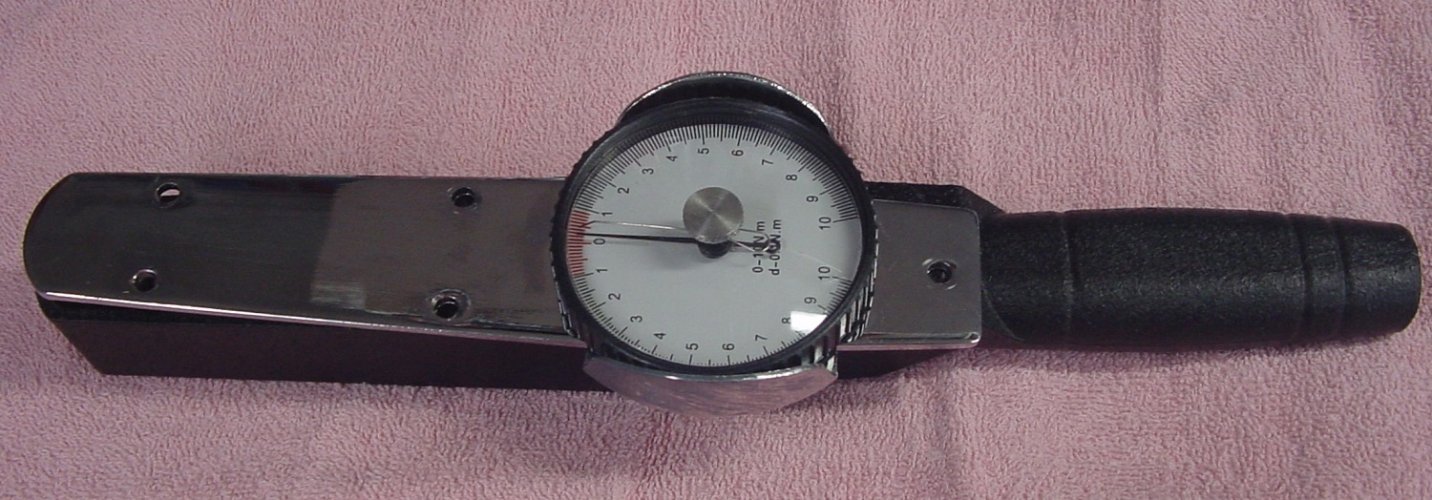
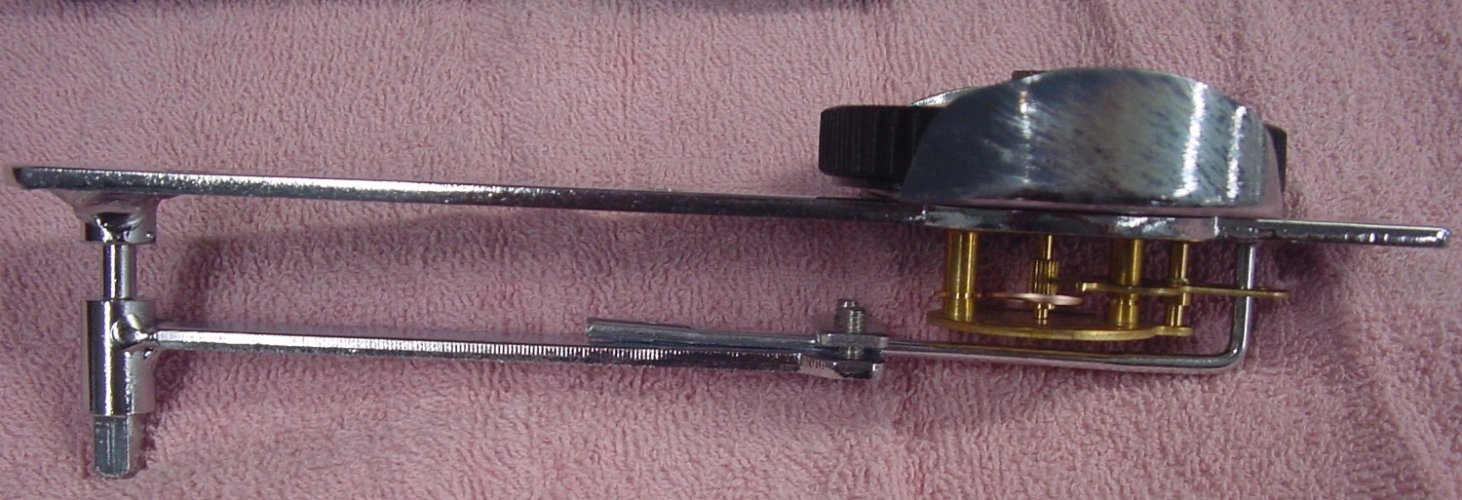

I was very interested to watch some of the disassembly videos of the click-type of micrometer torque wrenches. I also was interested in the dial-type of torque wrenches, but the price of the Snap-On units is quite high. The items from Precision Instruments are less expensive; from their website it appears as though they may make these (just outside Chicago) for Snap-On and their prices are lower. Even less expensive are some offerings from Chinese companies.
https://torqwrench.com/
I decided to obtain one of the much less expensive dial-type torque wrenches. See link below -
https://www.amazon.com/gp/product/B078MHYBB7/ref=ppx_yo_dt_b_search_asin_title?ie=UTF8&th=1
This less expensive unit (0 to 10 N-m) was advertised as having a 3% accuracy. I tested this against a 1/4-inch drive digital torque adapter which I had earlier checked against some weights and found to be pretty accurate (couple of percent). [Note: I am not trying to be a metrology lab, and my checking involves placing weights at a distance along an arm (ratchet) with the angle maintained as close to a right angle as I can. The torque adapter is horizontal clamped in a vice, but in addition to the rotational moment placed to check the torque, there is another moment at an orthogonal angle (due to the torque adapter sticking out of the vice.) Thus, it is necessary to hold the torque adapter whilst trying to place the weights on the ratchet arm. Saying that I get a couple of percent accuracy could be optimistic.] But, for my purposes I concluded that the torque adapter was "accurate" and would be my standard to check other torque wrenches.
A photo of the torque adapter is shown below. The particular device was packaged by Bike Master and purchased through the 'Zon (currently this unit is shown as no longer available).
In my testing of the inexpensive dial-type of torque wrench against the digital torque adapter I found the measurements to be more than 5% off. Instead of returning the torque wrench to Amazon, I thought that I would investigate the mechanical operation of this device. Shown are photos of the top of the dial-type torque wrench (screws have already been removed). Next is a side view where the tension arm is connected to an adjustable rod that is in a slot that drives a watch-like mechanism to move the dial indicator. The third view is of the bottom of the mechanism. Shown are a couple of screws that affix the rod that fits into a slot moving the dial. I determined the the movement back and forth of the rod (upon loosening the screws) would cause the sensitivity of the torque wrench to change. After a good deal of iterative fiddling about I was able to improve on the accuracy of the dial-type torque wrench. About 8.1 N-m on the dial produced 8 N-m at the torque adapter. There was similar agreement throughout the operating range. I declared victory. The torque wrench was re-assembled.
View attachment 92627View attachment 92628View attachment 92629View attachment 92630

One of my key tools when I need to "see" what is going on electrically-
The Simpson 260.
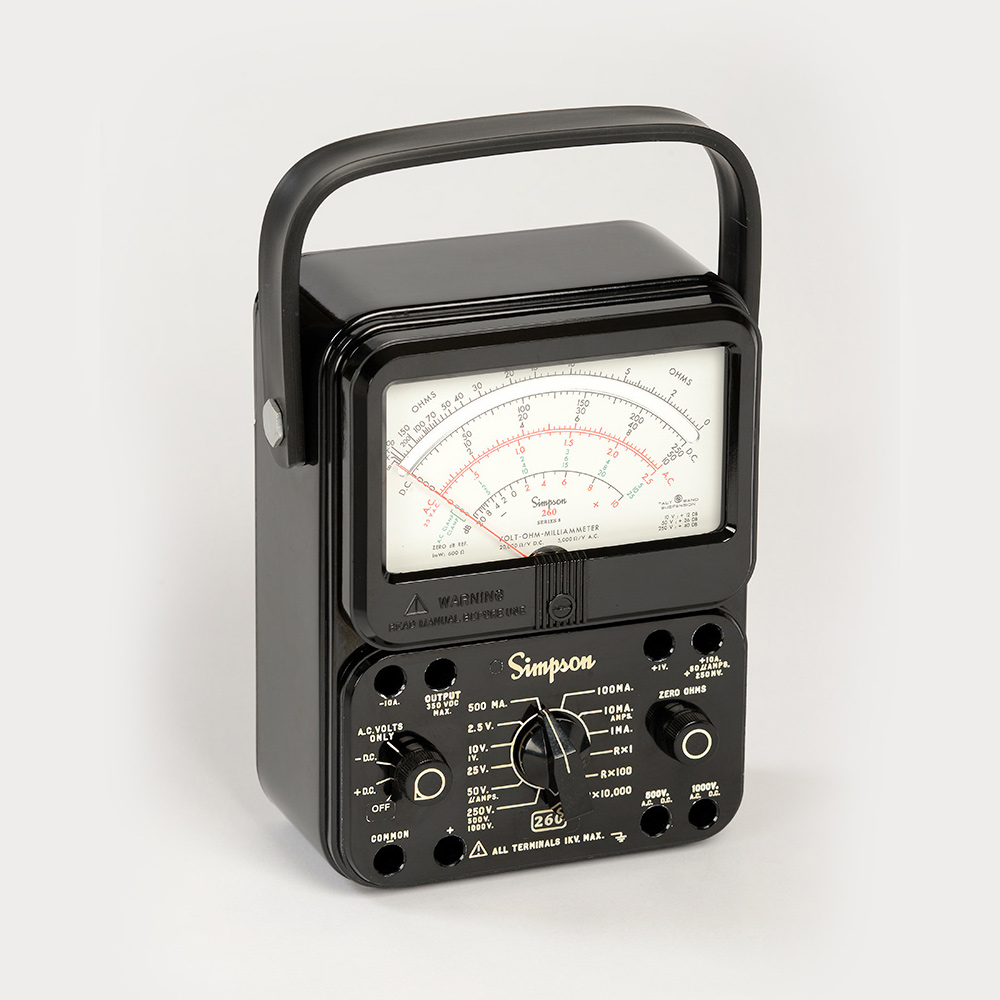
https://simpsonelectric.com/products/test-equipment/vom-multimeters/260-8-260-8p/
OM
Of interest were the large number of comments that indicate a preference in some circumstances for the analog VOM.
Didn't watch the video did ya.Because analog meters have certain advantages to them. I have one, but I also have a slew of DMMs right up to a Fluke 88V Automotive Kit.
Didn't watch the video did ya.
Care to extoll the benefits an analog would have over a modern digital these days?
Didn't watch the video did ya.
Care to extoll the benefits an analog would have over a modern digital these days?
You would have to see the difference in actual operations to understand the difference in reaction times.
OM

I love working with old engineers. Many think they know everything.Exactly.
BTW, I used to have fun with engineers that were in their last year or just graduated. Funny how people think when they see digits, how can you possibly go wrong.
So I gave then a simple DC series circuit (10V) with two 10M ohm resistors in it and asked them to measure the voltage from ground to the first resistor. Hey, why am I not seeing 5V. Well that is what happens when you don't understand measurement principles and understand how a measurement device can change reality.